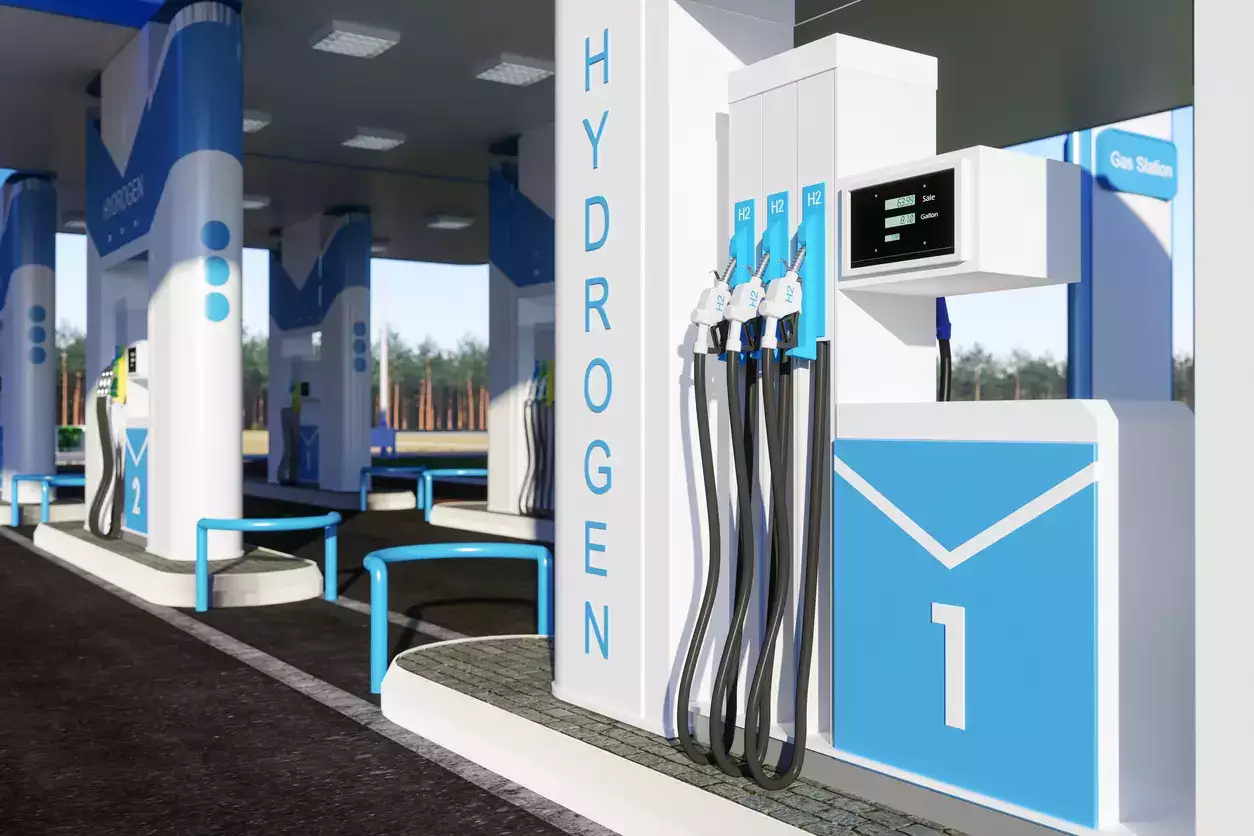Hydrogen: The missing piece in India’s clean mobility revolution

In his address at the conference, Minister Hardeep Singh Puri emphasised the transformative potential of hydrogen for India’s energy landscape. “Green hydrogen requires local demand and local consumption... it will be successful in India. We still need to bring its cost of production down. The day refineries start using green hydrogen, we will be scaling it up,” said Minister Puri. His words echoed a central message from G-STIC: hydrogen is poised to become a vital component of India’s clean energy future, especially in sectors where EVs face limitations.
Hydrogen’s potential in India’s mobility sector
India’s transportation sector contributes nearly 14% of the country’s total carbon emissions, with road transport being a significant contributor. While electric mobility is crucial, it comes with challenges, particularly in heavy-duty vehicles, long-haul freight, and public transport. Battery electric vehicles (BEVs) may not always provide the range, energy density, or quick refuelling times needed for these sectors. This is where hydrogen fuel cell electric vehicles (FCEVs) offer a promising alternative.
Hydrogen fuel cells are highly efficient, offer fast refuelling, and have a range comparable to conventional internal combustion engine vehicles. Additionally, they produce zero emissions, emitting only water vapour, making them a cleaner alternative for reducing air pollution—one of the major challenges in India’s congested urban areas. Hydrogen technology could be crucial in decarbonising sectors like trucking, buses, and other commercial vehicles that require high energy output and rapid refuelling.
At the G-STIC 2024 conference, it was clear that hydrogen is not a competitor to electric vehicles but a complement. Both technologies are critical to India’s journey towards sustainable mobility. While EVs are ideal for personal transportation and short trips, hydrogen will likely power heavy-duty transport and long-distance travel, helping to meet India’s clean energy goals.
Building a hydrogen ecosystem in India
India’s ambitious energy goals are integral to its broader decarbonisation strategy. The government has set a target to achieve 500 GW of renewable energy capacity by 2030, and hydrogen will play a key role in achieving this milestone. The National Green Hydrogen Mission aims to make India a global hub for green hydrogen production, focusing on scaling and integrating hydrogen into the energy and industrial sectors.
Developing a comprehensive hydrogen ecosystem is essential for hydrogen to impact the automotive sector truly. This includes production and the infrastructure for storage, distribution, and refuelling. Hydrogen production remains expensive due to the high costs associated with electrolysis, the most common method for generating green hydrogen. However, as Minister Puri pointed out, efforts are underway to lower these costs, and scaling up production in sectors like refining will be vital in making hydrogen commercially viable for mobility.
Dr. Dietrich Van der Weken, General Manager of G-STIC at VITO, underscored the importance of a holistic approach to energy transition: “Technological solutions are essential to achieving a sustainable future, but they must be integrated with the right policies and partnerships to create real-world impact. Hydrogen, alongside renewable energy, is critical to this transition, particularly for hard-to-electrify sectors.”
Public-private partnerships will also be crucial in creating the infrastructure necessary for hydrogen-powered mobility. At G-STIC, experts highlighted the importance of cross-sector collaboration in driving technological innovation. Automakers, energy companies, and policymakers must work together to create an integrated energy ecosystem. Investments in hydrogen refuelling stations—similar to the charging infrastructure being developed for EVs—will be necessary to support the adoption of hydrogen-powered vehicles across India’s diverse and vast landscape.
India’s role in the global hydrogen economy
India is uniquely positioned to lead the world in green hydrogen production. With abundant renewable energy resources—particularly solar and wind—India has the potential to produce hydrogen at scale and at a lower cost than many other countries. India can produce green hydrogen by harnessing renewable energy to power electrolysers, reducing its dependence on fossil fuels and ensuring a more sustainable energy future.
Hydrogen’s role in the auto sector is not just about reducing emissions but also about positioning India as a key player in the global hydrogen economy. India’s commitment to achieving 20% ethanol blending in petrol by 2025 and scaling up hydrogen production demonstrates its proactive stance in diversifying energy sources. As countries around the world look for sustainable alternatives to fossil fuels, India’s leadership in hydrogen can set an example for other developing nations.
At G-STIC 2024, discussions underscored that hydrogen will be integral to decarbonising heavy industries and transport—sectors that are difficult to electrify. The country’s ongoing efforts to decarbonise the refining and steel industries through hydrogen will create a blueprint for the global transition to cleaner energy. As Minister Puri remarked, “The day refineries start using green hydrogen, we will be scaling it up.” This is a critical step not only for industrial decarbonisation but also for fuelling the transport sector.
Challenges and the road ahead
While hydrogen offers immense potential, key challenges remain. The primary issue is cost—producing green hydrogen is still more expensive than conventional fuels, though this gap will narrow as renewable electricity costs fall and production scales up. Infrastructure is another hurdle, as India currently lacks the specialised pipelines, storage, and refuelling stations needed for hydrogen. Investment in this infrastructure is critical to achieving the goals of the National Green Hydrogen Mission. Lastly, public awareness and consumer acceptance will be essential for adopting hydrogen-powered vehicles, particularly in sectors like trucking and public transport, where its benefits are most evident.
India’s mobility sector is at a critical juncture. While electric vehicles will significantly reduce emissions, hydrogen is the missing piece that can complement EVs and help decarbonise sectors where batteries fall short. G-STIC 2024 reinforced that hydrogen is not just a future energy source but a crucial element of today’s energy transition.
India’s clean mobility revolution is underway, and hydrogen will be a key driver of this transformation.

